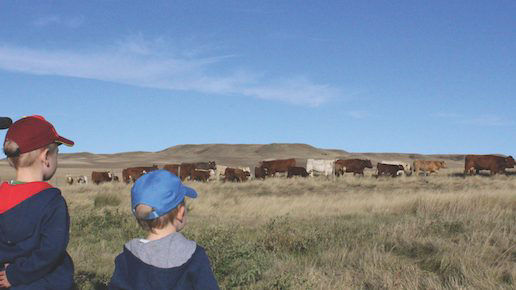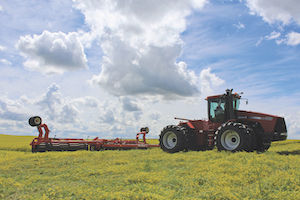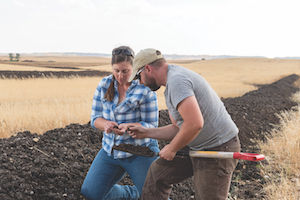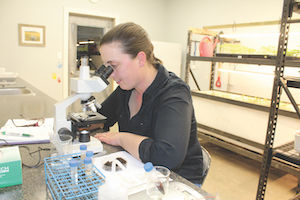8 READ-TIME
Regenerative Farming Helps Secure A Sustainable Future
January 10, 2024

By Jennifer Barber
Good crops emerge from good soil, and Cody Straza and Allison Squires have made soil health the backbone of their organic grain and mixed cattle operation. Over the past 13 years they have educated themselves on how to create soil that is resilient and productive and how every part of their operation functions together to create land that will work long into the future.
GROWING FROM LEARNING
“Education is a key component of our farm,” says Squires. “It’s a line item in our budget. Once we started learning about regenerative agriculture practices, we realized focusing on the health and functionality of our soil would be important for the long-term viability of our farm. We want to leave future generations with land that continues to produce and we farm with that goal in mind.”
“We have taken courses on how to create good quality compost, again as part of our focus on education,” says Squires. “We do our own soil testing making use of my background in toxicology, so we make sure we are using everything properly to make the most out of the tools that are available to us.”
Straza and Squires also make strategic use of cover crops in order to conserve moisture and improve soil quality. At minimum, every four years they grow a cover crop in place of a cash crop on every field. These cover crops can be simple single plant or complex mixtures of different plant types including legumes to fix nitrogen in the soil.
“We incorporate this with adaptive multi-paddock grazing that allows our cattle to trample on the field and act as a natural method of incorporating the green material into the soil,” says Straza. “Combined with their urine and manure, it improves the organic matter and preserves moisture for the next year.”
They also use roller crimpers, which crimp the plant stems, terminating the cover crop but keeping them anchored to the soil with their roots. This creates a mulch layer that helps prevent evaporation without requiring tillage. “We also use intercropping of cash crops, using mixed row or alternating row seeding,” says Straza. “We have recently been shifting to companion cropping of non-cash crops such as clover next to a cash crop, as a way to preserve moisture and reduce weed competition.”
ADDING CATTLE TO MANAGE MOISTURE
Straza says they have seen the financial benefits of reduced input and fuel expenses as the years have progressed, and that adding the cattle in 2019 had a big impact on their bottom line. While they started with a monocrop cover crop, which they would plow into the soil, now they graze their cows on high-quality forage, which also produces fertilizer for the following year’s crop.
RESEARCH AND EXPANSION
With a focus on education, running research trials is something they enjoy doing, whether it is their own research or part of a collaborative effort. While there has been lots of research in organic agriculture, it has not often been tested on a working organic farm. They have done plant breeding work with the University of Manitoba, and tillage work and side-byside trials with different government and university partners.
They also opened their own seed cleaning plant, Creekside Grain Cleaning, in 2015. “We wanted our seed to be in the best condition and more attractive to buyers,” says Straza. “In addition, it made economic sense. It worked well with our intercropping practices. We wanted to get paid for every kilogram that came off the field, so the economics of the seed cleaning plant worked.”
Straza and Squires first heard about the OYF program during their early years of farming when they met the 2010 National winners, Lauren and Ryan Maurer. They explained the criteria of what made an outstanding farmer, and while not looking for recognition, they used that template as a model of excellence.
“It showed us some areas where we could potentially grow, such as with our volunteerism,” says Squires. “I am now the President of the Canadian Organic Growers and have sat on many local boards. Cody works as a volunteer firefighter and sits on the Saskatchewan Soil Conservation Board. We are very intentional in our involvement — we give a lot and get a lot back.” The couple has added three children to their family — sons Declan (9), Gavin (7) and Caden (5). While still very young, their car seats have been in the tractor from the time they were born, and they play as much a part of the day-to-day operations as their ages allow.
“We would say to anyone who is interested in learning more about soil conservation and learning more about regenerative farming practices, to just be open to learning, be it from other people or from other resources available to them,” says Straza. “There is so much available and the principles can be applied to different types of farmers and farming. Find your people, and the knowledge will come from there.”



